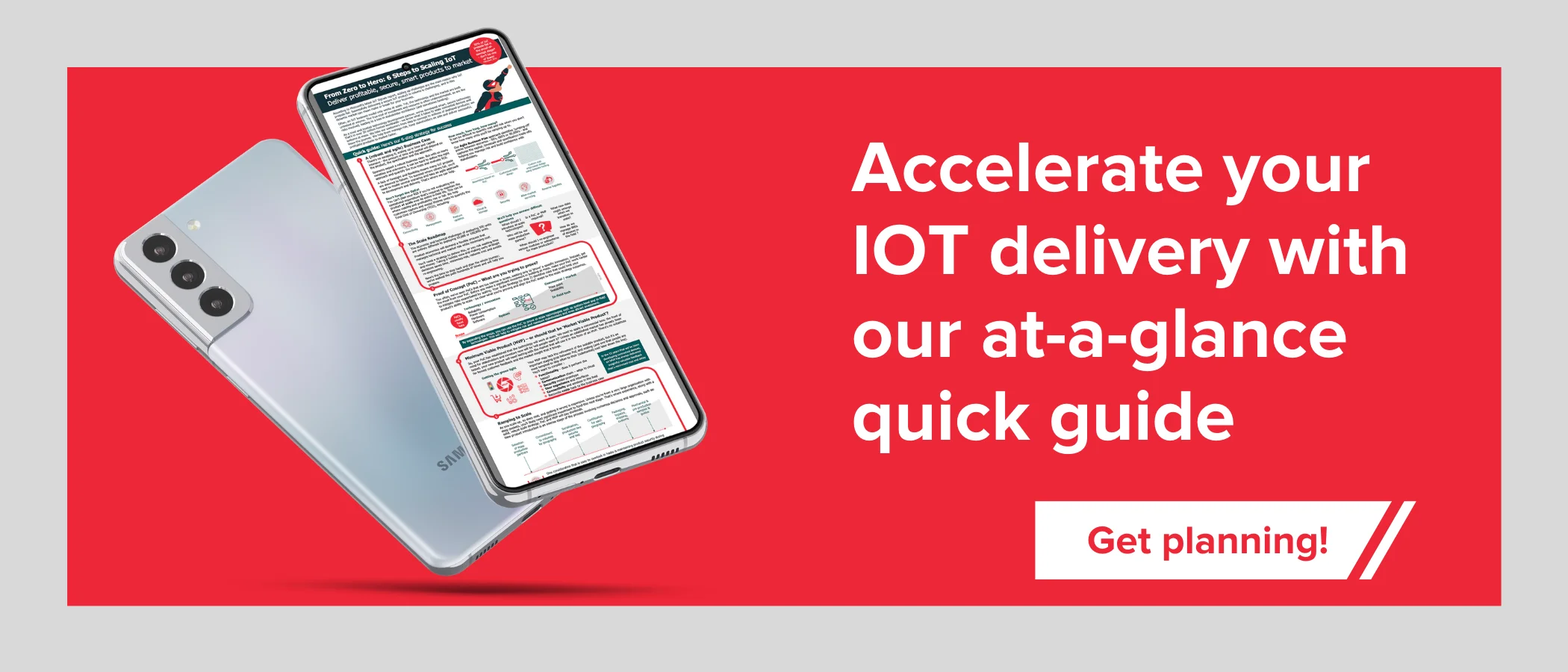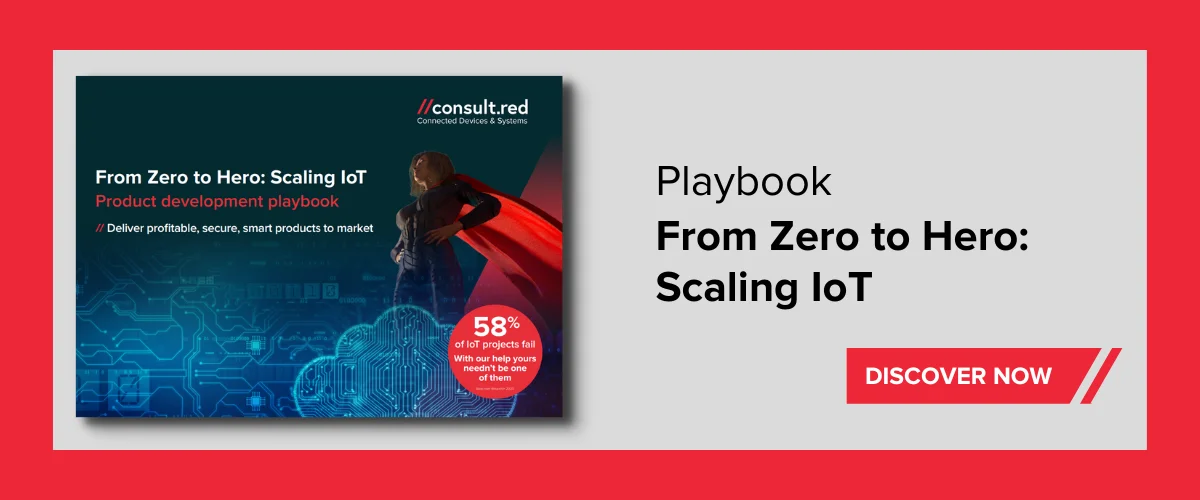MVP – an essential sanity check for successful product development
Many teams are tempted to skip the minimum viable product (MVP) stage of development because they worry it will add cost and delay time-to-market. But, argues Stuart Griffin, it’s a much-needed sanity check to test your business model that can also accelerate the delivery of your device to customers
Bring your customer to the party
However, while MVPs are more expensive than high volume products and there is an inevitable additional amount of time spent, they can be critical to the success or failure of a deployment. Skipping the MVP stage and going direct from proof of concept to productionised deployment, fails to bring one of the most important influences on the success or failure of a product or service into the equation – the customer.
It’s not just the first time a product meets the customer, MVPs are also the first time the technology meets the business model and so MVPs present an early means to understand business case flaws or constraints.
MVPs are widely used by start-ups as they prudently feel their way into emerging markets or pioneer new business models. They are equally applicable to established brands as they internet-enable their products and explore new revenue streams.
De-risk full-scale production: see how customers will behave versus how you hope they will
Feedback gathered from MVP users can be vital to de-risking the move to full-scale production. Insights received from MVP usage help to inform organisations about how users will actually interact with a device or service, rather than accepting designers’ hopes and expectations as reality.
The MVP stage provides an opportunity to take off the emotional blinkers that inevitably arise when teams live and breathe development of a new product.
The need for clear, unbiased information is why large companies split out their development teams from their evaluation teams.
Harness feedback to improve your product
The MVP is the first time the customer comes into contact with a new device or service and can bridge the gap between developmental assumptions and deployment realities.
By rolling out MVPs, ideally, to end users that are known to be responsive and savvy, organisations can test assumptions in a business case and gain immensely valuable feedback. Testing theories such as whether customers are willing to pay a monthly subscription places the MVP process at the heart of your digital strategy and can provide vital insights not just into the product but the entire business value of an offering.
Feedback generated from MVPs encompasses uncovering of relatively straightforward product refinements such as siting buttons for improved ease of use, to business case-threatening issues, such as being unable to find network coverage or identifying flaws in the proposition.
Use an MVP to accelerate time-to-market
In this respect, MVPs actually shorten time-to-market because a soft launch of a product, admittedly not the final mass-market product, can happen more rapidly than launching a mass-market product.
In addition, MVPs help seed the market, with early adopters gaining familiarity with new offerings that are soon to target the mainstream.
With web giants having brought beta products to market for many years, users are familiar with early versions of products being delivered with enhancements and revisions to come later. However, devices are not software, so upgrades are far more complex and organisations should not confuse software iterations with device development.
Making changes before scaling up cost is a small price to pay
Organisations often skip the MVP stage because of the high costs of MVPs which are not able to harness the economies of scale of mass production.
However, being able to take information from the MVP process and alter approaches before committing to tooling and putting in production lines for high volumes of devices can save orders of magnitude of expense.
One example Consult Red has encountered involved an IoT product that had been developed to utilise narrowband-IoT (NB-IoT) connectivity.
MVP testing in the real world – when things don’t go to plan
The developers had identified NB-IoT as the optimum network technology for their device and application. However, it was only when the device was launched into the field that it became apparent there was insufficient NB-IoT network coverage in the markets they wanted to operate in. This example illustrates how decisions made in the excitement of the development process can fail to translate into real-world deployments. Other examples include devices being inconvenient to use because popular buttons are located in the wrong place or casing being insufficiently robust for use in the field.
The MVP stage provides an opportunity to avoid easily fixed issues such as these and avoid giving customers an excuse to ditch you.
A vital sanity check that pierces through emotional blinker
The MVP stage provides a vital sanity check with real customers that can pierce through the emotional investment of developers that can blinker further innovation and additional refinements before heavy investment in mass-market products. It is a final safety net to verify, using independent evaluators, that users see value in the offering and to assess whether the business case is viable. For many businesses, it’s also an important funding milestone that gives investors’ confidence to release more capital to take a product to mass market.
Deploying hundreds of MVPs truly is a way to generate useful information and gain an understanding of user habits and preferences before moving to the tens of thousands of products with all the associated manufacturing set-up costs that involves.
As an independent technology development partner, Consult Red has been helping customers develop MVPs in large-scale consumer-facing industries for many years. We have found that gaining insights into the experience of the consumer at the MVP stage enables information on design, usage, maintenance and security to be collected and understood as part of the process of moving to large-scale product launch.
The question shouldn’t be whether the MVP stage is too time-consuming and costly to engage in, but whether you can afford not to apply consumer insights from MVP deployments to your mass-market product.
How we can help
As a tried and trusted technology innovation partner, we’ve developed smart, secure technology that’s in over 30 million homes worldwide, we can help manage your risk and get you to market faster.
Contact us if you need advice and support.





